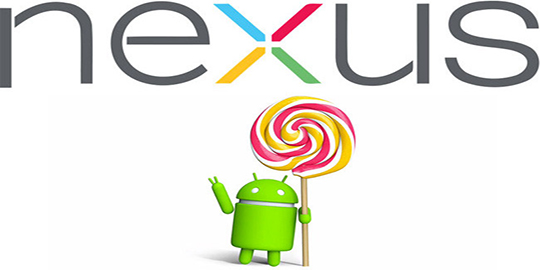
Technology Observatory November 10-16
This week's Technology Observatory brings you the following stories:
· Google to test its drones at a former NASA base
· Lumia 535, the new Microsoft terminal without the Nokia brand
· Samsung Galaxy Note Edge could reach Europe in December
· YouTube Music Key: the video giant launches a new music service
· Google starts upgrading its Nexus terminals to Android 5.0 (Lollipop)
· The latest gadgets and novelties unveiled by Samsung
· Samsung Android phones will be more secure thanks to BlackBerry: KNOX and BES12 join forces
· All Lumia terminals with Windows Phone 8 to be upgraded to Windows 10
· Amazon starts looking for workers to control its future drones
· Skype debuts on the web
· Telefónica and Telepizza to launch one-click pizza delivery service
Moffett Airfield is an old air base owned by NASA and located in the San Francisco Bay area of the United States. It covers 400 hectares of land and boasts three hangars, a flight operations building, two runways and a private golf course, all of which will now belong to Google for the next 60 years. The information was announced via a NASA press release indicating that a deal has been closed with Planetary Ventures, Google's real estate subsidiary, for the sum of $1.16 billion, entitling Google to use the facilities for its space exploration, aviation and robotics projects. Following several rounds of negotiations commencing in February this year, Google has managed to secure a major facility which for years played a key role in technological development as home to NASA's Ames Research Center as well as the famous Hangar One, built to house dirigible-style airships in the 1930s. "Once renovations are complete, Hangar One will again be home to high-tech innovation as it will be used for research, development, assembly and testing in the areas of space exploration, aviation, robotics and other technologies." Google has mentioned that it plans to invest just over $200 million to refurbish the base, but has not announced its plans for the future. Even so, everything suggests that Moffett Airfield will become the new headquarters of the Google X division and special projects like its Internet balloons and Project Wing drones, as well as its developments in medicine and other fields. Meanwhile, the deal will save NASA an annual $6.3 million in maintenance and operational costs. For its part, Google has secured an important site where it can continue developing its current projects and work on many more for the future.
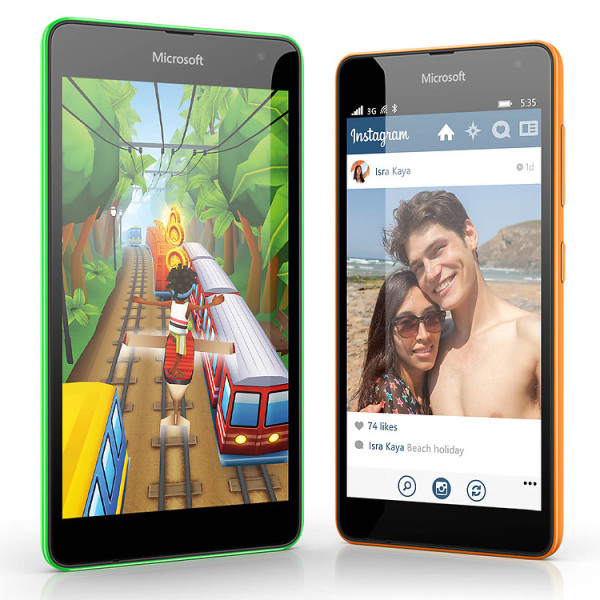
The new Microsoft Lumia era has begun and as revealed by the company last week, the first terminal from Redmond without the Nokia brand has finally arrived. Microsoft Lumia 535 is now official, marking the beginning of a new era in which Microsoft aims to recover lost ground in the smartphone market, and on this occasion once again attempting to do so with a mid-range competitively priced terminal. The new Microsoft Lumia 535 comes with a 5-inch display, qHD resolution (960 x 540 pixels), quad-core Snapdragon 200 processor, 8GB expandable memory, 1GB RAM and a 1905 mAh battery, which is what the company usually provides for a terminal in this price range. It also has two 5-megapixel cameras, identical on front and back, with LED flash. Once again, and despite not being a high-end terminal, the company has installed all of its services. Office, Cortana and Skype will also be available, plus 15GB of free storage on OneDrive. As regards availability, the company has confirmed that it will reach Asia in the next few days with a $130 price tag in white, black, cyan, orange, green and dark gray, but we still don't know when it will reach other markets. This positions the 535 as a terminal targeted at emerging markets with a suite of technical specifications on a par with the ones we'd come to expect from the old Nokia. One thing is clear: Microsoft is going all out to conquer emerging markets in the wake of the now extinct Nokia. And to be honest, with such an aggressive price strategy and the array of technical specifications offered, this new terminal could well become a best-seller in these markets and earn Microsoft the largest share of the low-end segment.
The Samsung Galaxy Note Edge was Samsung's great surprise at the IFA in September, and presented as a limited edition of the Galaxy Note 4 with a curved edge along the right-hand side of the display it has become a dark object of desire for geeks thirsty for innovation. The device is already available in its native country, South Korea, but at an exorbitant price and in very limited edition. There's not much information about its release in other markets, though the topic is slowly gaining momentum irrespective or not of Samsung going ahead and announcing its official rollout in different countries. Keen to avoid problems with demand, the Koreans are being very cautious, but the Galaxy Note Edge will reach stores in the United States this Friday, again in limited edition and with a hefty price tag of $945.99. We can confirm that the most innovative device in the entire Android portfolio released this year will land on European shores as well, but you'll have to wait until December and set aside around 899 euros if you want to buy one of the limited units that Samsung will be sending to selected stores in our markets. The first country to get its hands on terminals will be Denmark, where it will be released on December 12 with a price somewhere between 849 and 899 euros, but Germany, the United Kingdom, Netherlands, Luxembourg, Spain, Italy, Switzerland, Poland, France, Austria, Portugal and the Scandinavian countries are on the release list as well.
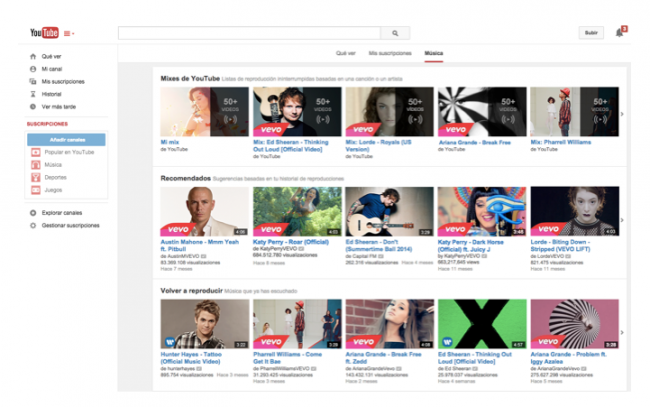
It was something that had been doing the rounds for some time and now it seems official: Google will finally enter the streaming music service market through YouTube. Earlier this week Spotify CEO Daniel Elk himself admitted that the video platform was one of the three benchmarks for listening to music. There were also rumors this week that they were going to launch the service very soon, and that is exactly what has happened. YouTube Music Key is Google's ad-free subscription music service with the possibility of watching offline content for 9.99 euros per month. Let's take a closer look at how it works. Google had no desire to create a new application: YouTube suits its purposes very well (1 billion active users per month) and Music Key will be just another built-in service available on the web and in the applications for cell phones, tablets and TV sets (Smart TV+Chromecast) that we're all familiar with. The service will launch as a beta and you'll need an invitation to test it. Users who sign up for the test will have free access for six months. The definitive rollout and how the invitations will be distributed have yet to be announced, though we do know that for the moment the service will be available in this mode in seven countries, including Spain. When the final version of the service is released, subscribers will be able to create and play lists without ads, both online and offline. It will be possible to save videos (720p and 480) and, of course, soundtracks. The way it will work is similar to other services: content will remain in your device for up to 30 days for offline use. Playback will be uninterrupted, so you'll be able to use another app or switch the display off and still listen to your music. All the lists you store offline will have their respective video. You'll also be able to upload tracks that don't have a video but they'll have a preset jacket as the image. So what will happen to Google Play Music? Mountain View will still offer it, but as part of the same subscription for YouTube Music Key. In other words, you'll have the Google Play Music catalog, storage on Drive to upload your tracks, and now YouTube videos. The price, as mentioned above, is 9.99 euros and there'll be a special offer for what Google calls “heavy users”. They haven't yet defined the parameters for this user profile, just a few vague variables: people who play a lot of music, share content, etc. It's not clear what the line is, but if you're included in that small group you'll get six months of free access and then pay a lifetime monthly fee of just 7.99 euros. Google doesn't see Spotify, Deezer and Co. as competition for Music Key. According to them, their service is complementary and aims to offer more than just music. What kind of catalog will be available? Google say they've done deals with the majority of record labels, large and small, but as yet they haven't announced the definitive list, so we'll just have to wait and see what is available and what's been left out. As with YouTube, you'll be able to create playlists and the Music Key section will let you create theme and artist lists. Google hasn't specified whether the list-making function will use Songza technology, the company it bought some time ago. Neither has it said how much each artist will earn from playbacks. The only thing it has made clear is that negotiations have been held with each label, one by one, and that they hope to attract lesser known talent through training programs and teach them about publishing and posting their work on the platform. Are they competition for Spotify, Deezer and Co.? According to Google, they're not directly aiming for that market. They claim their service is about more than playing music as it will have the added value of videos.
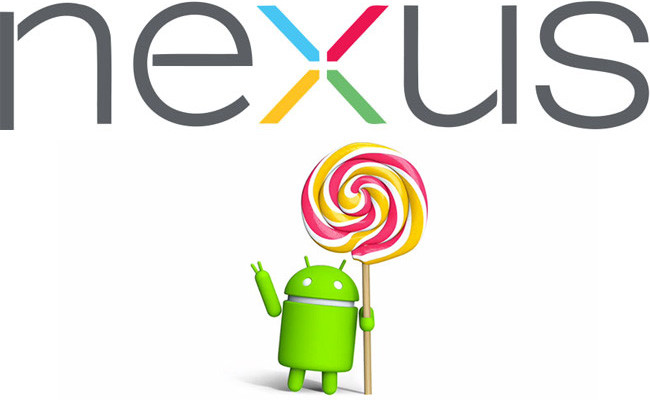
It seemed the day would never come but Google has finally announced the Android 5.0 (Lollipop) rollout for its Nexus 5, Nexus 7 (2012), Nexus 7 (2013) and Nexus 10 devices. As usual, the upgrade to Android 5.0 will be phased in gradually for Nexus devices and will take several weeks to reach all users. No doubt in the next few hours they'll post factory images for their Nexus terminals and the OTA files will be released so that you can upgrade your Nexus manually.
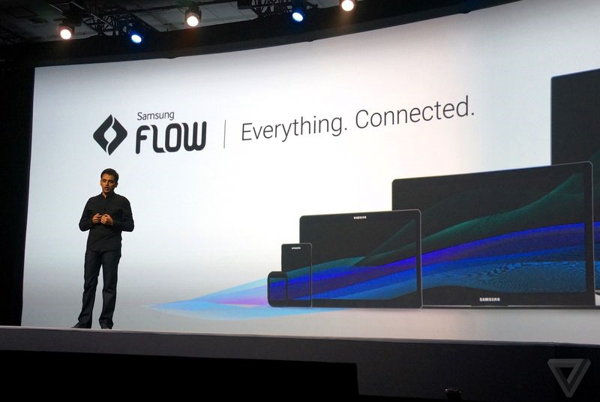
Last week the Samsung Developer Conference was held in San Francisco, so let's take a look at some of the most important novelties unveiled, especially at the presentations of gadgets focused on virtual reality.
Samsung Flow, for switching between devices almost "without noticing"
Smartphones, tablets, laptops, TVs, etc. – all Samsung devices will be more efficiently synchronized with Samsung Flow, which will let you "flow" between devices almost without noticing it. For example, you'll be able to continue watching on TV a video you'd started watching on your cell phone, and at the same time receive notification on the TV of an incoming call to your Galaxy phone, as well as how much battery it has left.
More information: The Verge
Tizen for Smart TVs and its SDK
The Samsung ecosystem is still committed to Tizen, and not only in mobile devices. The aim now is to reach the homes of millions of users worldwide through their smart TVs. Unveiled today: the Tizen SDK for smart TVs so that apps developers can adapt their creations, and the announcement that this system will be used in all new TVs launched by the company.
More information: TechCrunch
Samsung Gear VR on sale from next month
Now on the market is the virtual reality headset that Samsung unveiled a couple of months ago along with the Galaxy Note 4, apparently the only Samsung cell phone that is compatible thanks to its enormous dimensions and recently introduced features. The Oculus app store, a theater mode for an enhanced viewing experience and a specialized home page offer details of the software already available from day one.
More information: Samsung Gear VR | TechCrunch | The Next Web
New “Advanced S Pen” stylus for Samsung devices, and its SDK
The new Advanced S Pen, the latest version of the stylus used by numerous Samsung tactile devices, was unveiled, and there's also talk of the SDK release for personalized developments. The pen specifications include double the sensitivity of its predecessor, recognition of speed, tilt and rotation, and even advanced editing options.
More information: The Next Web
For VR scenarios: Project Beyond and the 3D camera that turns 360º
More Samsung efforts in the virtual reality world, this time with an image and video recording device that adopts the form of a disc, works with the Samsung VR, and will make it possible to capture 3D smart images and videos of practically any scenario. Useful for personal shots but much more so for creating VR spaces with the help of multiple users, it includes 16 high-definition cameras that can capture images at up to one gigapixel per second.
More information: The Next Web | ReCode | TechCrunch
Simband, the health tracking wristband, opened to hardware and software
Not long ago we witnessed a special incursion by Samsung in the world of smart wristbands, courtesy of its Simband, a device with multiple sensors and features designed to track and log selected health variables for the user, and to manage the data collected via the SAMI platform, thus removing all limitations to the handling of these data. Now all of the above have been opened up to developers and any personalizations that might emerge.
More information: The Next Web (Image | TechCrunch | Samsung Health
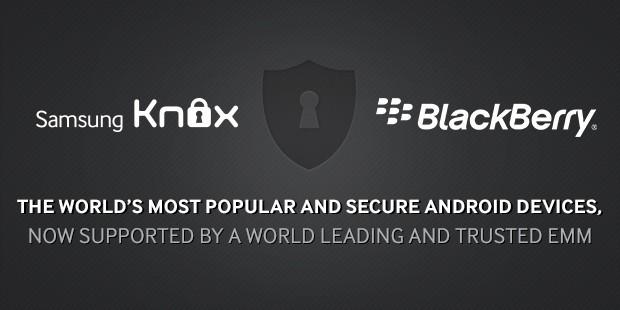
A giant fallen on hard times and the market leader – aka BlackBerry and Samsung – have announced the beginning of an alliance whose aim is to make the Korean firm's Android phones more secure. To put it short, the Canadians have revealed that their BES12 server system will be integrated with Samsung's security platform, better known as KNOX. The idea is that from the beginning of next year Samsung Galaxy phones and tablets will incorporate a series of advanced security options, harnessing the best of both companies. The solutions are principally targeted at companies and governments, a business in which Samsung is also keen to carve out its own slice. Now that the paths of the two companies have merged, we can expect security solutions that improve the user experience – and the companies' peace of mind – as it will be easier to distinguish between personal and corporate data. And data encryption will be greatly enhanced. The deal is in BlackBerry's interests as it enters the lean years, but will also help the company to gain ground in one of the fields where it has the most experience. As for Samsung, it will undoubtedly improve its KNOX system, which has recently raised a few eyebrows. At the beginning of this year, Samsung KNOX and certain devices were approved by the US Defense Department and the British government. The Korean company has also been working with Google on integrating KNOX with Lollipop. Over the last year a certain vulnerability has come to light and the Korean company has made it a priority to try and resolve the issue, and to include more hardware solutions like fingerprint sensors in certain devices. So the deal with BlackBerry is one of the best things that could have happened to improve its image.
Two years ago Microsoft unveiled its Windows Phone 8 mobile operating system, replete with changes, novelties and a whole host of marvels for users of this platform. So what went wrong? Users of Lumia smartphones of the then Nokia remember the announcement as a thorn in their side. Why? Because the vast majority of cells with Windows Phone 7 would not be upgraded to Windows Phone 8, which for many people saw as a stab in the back, and rightly so. Yes, Microsoft had its technical reasons and attempted to explain why the hardware of older Lumias was not compatible with the new system, but the public couldn't grasp technical terms like kernel and hardware, and wasn't interested anyway. The only thing that mattered to them was the fact that the cell phone they'd purchased a month or two back was going to grow out of date and become obsolete, which was reason enough to be upset. So now Microsoft is keen to avoid past mistakes. Through something as a simple as a tweet, a user told the official Twitter account for the Lumia brand that he was thinking about buying a Lumia but was concerned that it might become outdated when the next version of the mobile platform arrived, as when Windows Phone 7 was replaced by 8. Lumia's response was immediate, as if trying to shake off the poor reputation it had earned with the previous major upgrade: "We plan to upgrade all Windows Phone 8 devices to Windows 10 in the future :)", actually including a smiley face for good measure. Windows 10 for mobiles has not yet been unveiled in detail, which suggests that it's still being developed, but it's obvious that Microsoft wants to make it clear once and for all that if you purchase a Lumia you'll get your new Windows and won't have to wait for a new range of smartphone models from the company.
Prime Air is the program through which Amazon plans to offer deliveries in minutes using drones. It might sound futuristic, but the program is actually in a fairly advanced state. In fact, we recently heard that Amazon had requested permission from the FAA to start testing drones in its own grounds. Now we've heard that the company is looking for staff to control the Prime Air drones. In fact, job vacancies for drone operators have been published in places like Cambridge (United Kingdom) and Seattle (U.S.A.). The job announcement for Cambridge states that Amazon is looking for people with at least five years' experience in managing test flights, and an additional three years in less senior positions. An essential requirement for the position is a degree in aeronautical engineering, although Amazon does say that it will consider alternative engineering requirements if the applicant has the requisite experience. It therefore looks like the project with which Amazon aims to revolutionize deliveries is very close to becoming a reality.
Microsoft has announced its next major release: a web version of its popular instant messaging and Skype video call. The Beta version of the application will be compatible with standard browsers (Google Chrome, Firefox, Internet Explorer and Safari) without installing any additional plugins. Which is great news for users of the service as they won't need to download the application. Skype web will operate directly from Skype.com, delivering the service without additional plugins through WebRTC (Web Real-Time Communication), a series of APIs developed to enable transmission between audio and video web clients as fast as possible, a web standard already implemented in several Google and Mozilla services. Microsoft will start testing the service with a small group of Beta testers, who for the moment will need to install a plugin before the complete launch of the version with the WebRTC protocol.
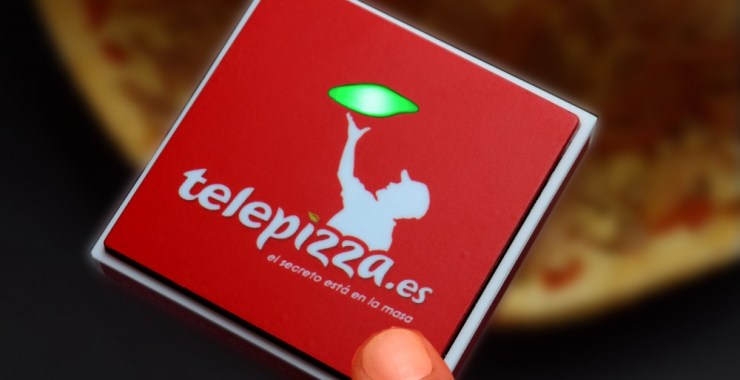
The Internet of Things is the logical development of the industry's goal to interconnect all the important aspects of our lives. One striking example is the partnership between Telefónica and Telepizza to create Click & Pizza, a little button that sticks to your fridge like a magnet and lets you order your favorite Telepizza instantaneously with a single click. The button looks like a fridge magnet and will be standalone thanks to the built-in battery. When you push it, it places an order anywhere you are, so you don't need to call, send a text or do anything else. The only requirement is that you register with the Telepizza website, add a favorite order for home delivery, and then add it to the fast Click & Pizza service. "Our aim is that wherever they are in their home, customers can place an order with us instantaneously. The Internet of Things means that we can develop multi-channel distribution, in other words more channels for accessing our products, as well as speeding up our services and making them more relevant to the daily routines of customers who are constantly looking for solutions to make their everyday lives easier," explains Emilio Tovar, Telepizza's systems director. Telepizza has experienced significant growth in its online home sales, which accounted for 25.2% of the total in 2013. Sales through mobile devices represent 27% of all e-Commerce sales and the company's website received 18 million visits in 2013. So it's understandable that they want to expand and even get ahead of the game in the Internet of Things. At first sight what Telepizza is offering might seem trivial, but imagine other uses, not just fast food sales. Imagine the unlimited uses not only in our own homes but in public places and business settings. Every device with added utilities, control and security through functionality and remote monitoring. Internet evolved by connecting people, and not just to content. In this new era the goal is to connect the devices that offer functions for our daily routines and add something "extra" by interconnecting them. The Internet of Things is the new era that we will have to embrace in the post-PC era, and although ordering pizza at the click of a button might seem inconsequential, in the not too distant future it will be just another daily routine.
